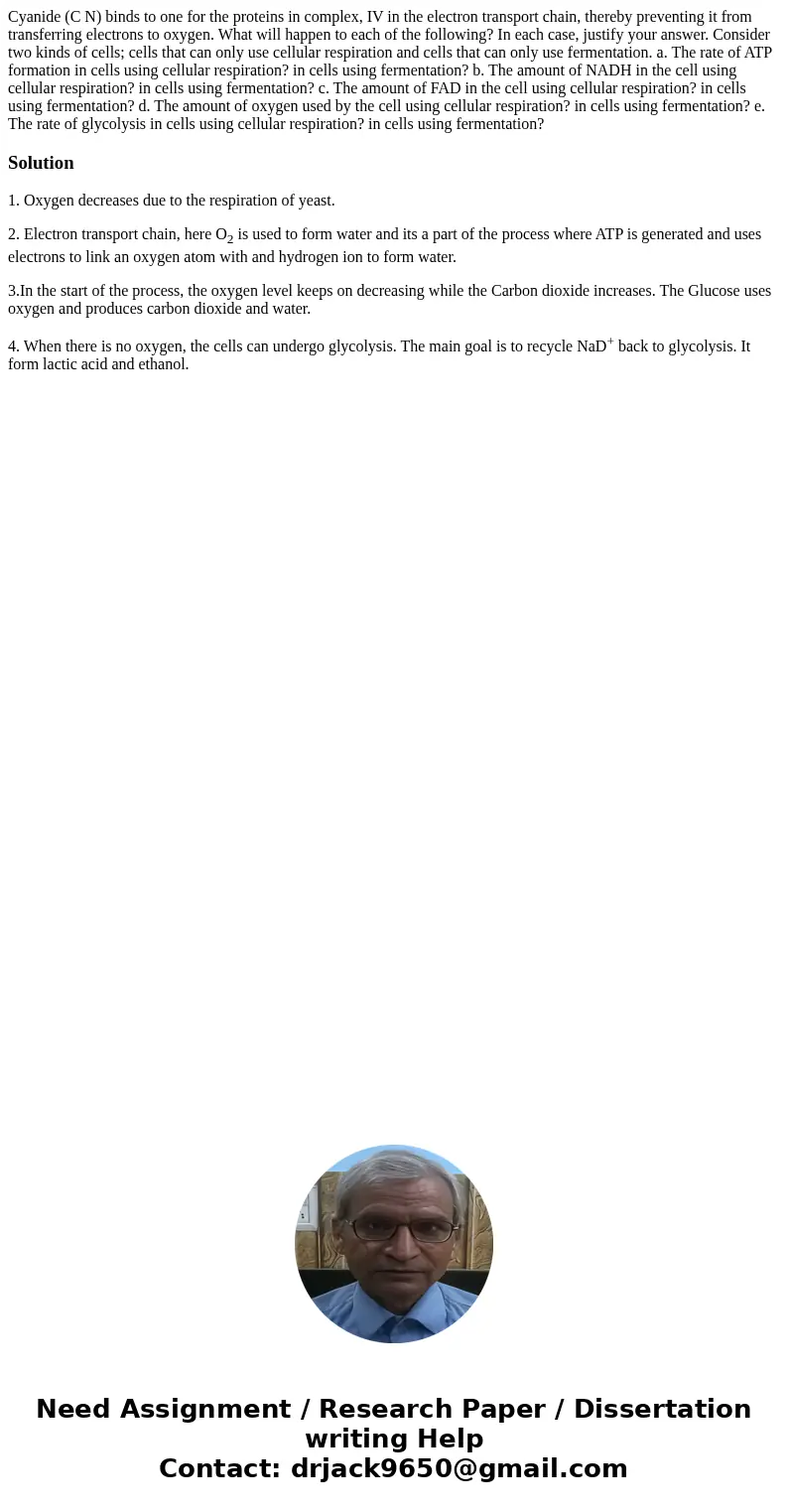Cyanide C N binds to one for the proteins in complex IV in t
Cyanide (C N) binds to one for the proteins in complex, IV in the electron transport chain, thereby preventing it from transferring electrons to oxygen. What will happen to each of the following? In each case, justify your answer. Consider two kinds of cells; cells that can only use cellular respiration and cells that can only use fermentation. a. The rate of ATP formation in cells using cellular respiration? in cells using fermentation? b. The amount of NADH in the cell using cellular respiration? in cells using fermentation? c. The amount of FAD in the cell using cellular respiration? in cells using fermentation? d. The amount of oxygen used by the cell using cellular respiration? in cells using fermentation? e. The rate of glycolysis in cells using cellular respiration? in cells using fermentation?
Solution
1. Oxygen decreases due to the respiration of yeast.
2. Electron transport chain, here O2 is used to form water and its a part of the process where ATP is generated and uses electrons to link an oxygen atom with and hydrogen ion to form water.
3.In the start of the process, the oxygen level keeps on decreasing while the Carbon dioxide increases. The Glucose uses oxygen and produces carbon dioxide and water.
4. When there is no oxygen, the cells can undergo glycolysis. The main goal is to recycle NaD+ back to glycolysis. It form lactic acid and ethanol.

 Homework Sourse
Homework Sourse